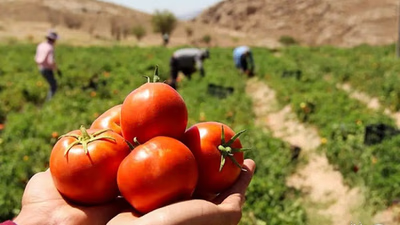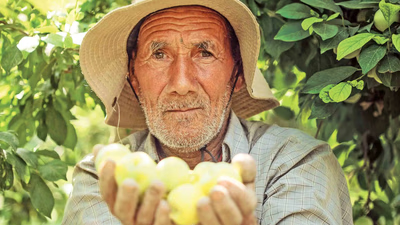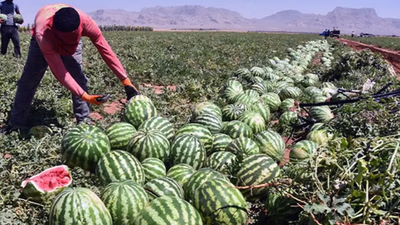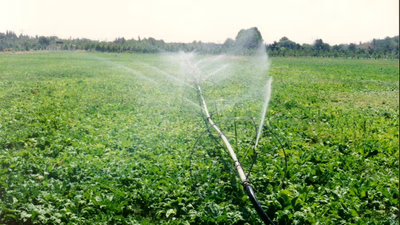
Exploring agricultural solutions in the Middle East"s trade landscape."
The Middle East is characterized by arid and semi-arid climates, resulting in limited water resources. Water scarcity is a significant challenge for agriculture in the region, as it affects irrigation practices and crop production. Countries heavily rely on groundwater extraction, leading to aquifer depletion and saltwater intrusion. Efficient water management techniques and investments in water conservation and desalination technologies are essential to address this issue. Soil degradation is a prevalent problem in West Asia. Factors such as erosion, salinization, and desertification contribute to the loss of fertile soil. Unsustainable agricultural practices, overgrazing, and improper irrigation techniques exacerbate soil degradation. Soil reclamation measures, including land restoration, erosion control, and improved soil management practices, are necessary to safeguard agricultural productivity.
West Asia is highly vulnerable to climate change, with rising temperatures, changing precipitation patterns, and increased frequency of extreme weather events. Climate change impacts agriculture by altering growing seasons, reducing water availability, and increasing the risk of pests and diseases. Adaptation strategies, such as crop diversification, resilient crop varieties, and improved water management, are crucial to mitigate the negative effects of climate change. The Middle East has limited arable land due to its arid nature and expanding urbanization. Rapid population growth and urban development encroach upon agricultural land, resulting in decreased cultivable area. Efficient land use planning, land tenure reforms, and vertical farming techniques can help optimize land utilization and maximize agricultural productivity.
Agriculture in the Middle East is gradually turning to newer agricultural technologies to cope with climate change and various emergencies. The biggest challenge in this region is droughts caused by climate change, for example, the winter season in Iraq and Syria in 2021 was the hottest and driest in the last 30 years. It can be said that currently, the Middle East is experiencing a food security crisis, another challenge is the increase in the population of this region.
Experts expect the population of this region to double within the next 25 to 30 years, although currently, the lack of water has caused problems for the people living in this land. Hence, countries are looking for solutions that not only address current problems, but also allow them to sustain future challenges. The Middle East and North Africa, known as the MENA region, are no exception to this rule. Although the figures for agriculture's contribution to employment are relatively significant and consume more than 70% of scarce water resources, agriculture's share of GDP in most countries in the region is in the single digits and its contribution to economic prosperity is very small. .
While agriculture in the Middle East accounts for only 13% of the average gross domestic product of the countries in the region, this sector plays an important strategic role in promoting resilient food systems, keeping important economic sectors alive and forming a base for many economies. It plays a small and medium role. Out of the total population of 296 million people in the region, 84 million people or 28% are completely dependent on agriculture. Therefore, the development and political importance of the agricultural sector in the Middle East is often ignored.
The region is the largest importer of food in the world, and its governments are acutely aware of the geopolitical vulnerability that comes with such dependence. Maintaining a minimum subsidy regime for basic commodities is very important for the legitimacy of political regimes, but considering the financial constraints and the behavioral structure of the price of basic commodities and food in international markets since the global food crisis in 2008, it is very difficult to continue subsidy policies in the post-corona era. Is. Nevertheless, during the last 50 years, agricultural fields have played an important role in the socio-political developments of the region.
West Asian countries heavily rely on food imports to meet their domestic needs. Insufficient agricultural production, coupled with growing populations, has led to a high dependence on foreign food sources. This makes the region vulnerable to price fluctuations, market disruptions, and food security risks. Enhancing domestic agricultural productivity, investing in research and development, and promoting self-sufficiency in food production are important strategies to reduce dependence on imports. The agricultural sector in West Asia is often characterized by a lack of crop diversity. Reliance on a few key crops, such as wheat and barley, increases the vulnerability of the agricultural system to pests, diseases, and environmental shocks. Encouraging crop diversification, promoting the cultivation of drought-tolerant and climate-resilient crops, and supporting sustainable agricultural practices can help enhance the region's agricultural resilience.
The adoption of advanced agricultural technologies and practices in West Asia is relatively low compared to other regions. Limited access to modern farming techniques, machinery, and precision agriculture technologies hampers productivity and efficiency. Increased investment in agricultural research and development, technology transfer, and farmer education can facilitate the adoption of innovative practices and improve agricultural productivity. The Middle East faces political instability, conflicts, and economic challenges, which impact agricultural development and investment. Instability disrupts agricultural activities, hinders infrastructure development, and affects trade and rural livelihoods. Establishing stable governance systems, promoting rural development, and providing support to farmers during challenging times are crucial for addressing these challenges.



